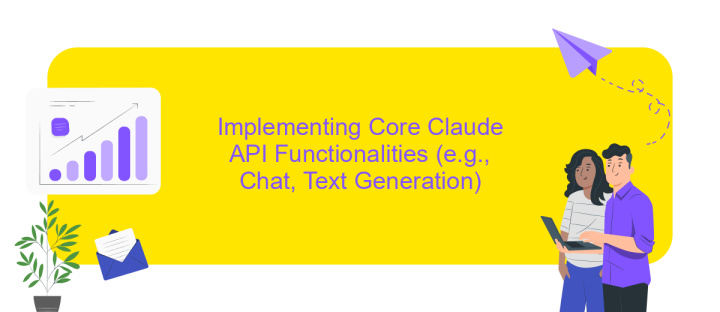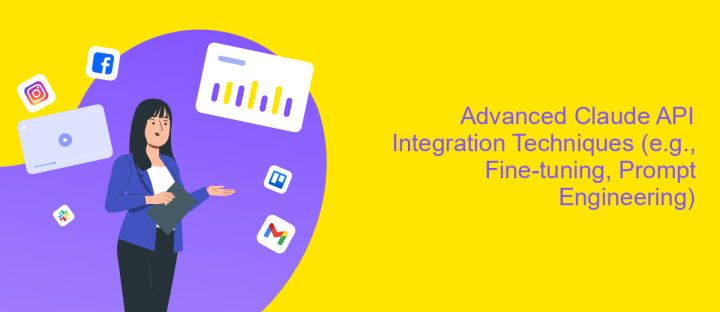Claude API Integration
Integrating the Claude API into your applications can significantly enhance their functionality and user experience. This powerful tool offers seamless connectivity and robust features, enabling developers to streamline processes and access a wealth of data. Whether you're looking to improve efficiency, automate tasks, or gain deeper insights, the Claude API provides the flexibility and scalability needed to meet your project's demands. Discover how Claude can transform your digital solutions today.
Introduction to Claude API and its Capabilities
The Claude API is a powerful tool designed to enhance the capabilities of developers by providing seamless integration with Claude's advanced AI functionalities. It offers a robust platform for creating intelligent applications that can process and understand natural language, making it an essential resource for businesses aiming to leverage AI in their operations. With its user-friendly interface and comprehensive documentation, the Claude API simplifies the integration process, allowing developers to focus on innovation and efficiency.
- Natural Language Processing (NLP) for understanding and generating human-like text.
- Real-time data analysis for insightful decision-making.
- Customizable AI models to suit specific business needs.
- Scalable solutions that grow with your business.
- Secure and reliable infrastructure to protect user data.
By integrating the Claude API, developers can unlock a wide range of possibilities, from automating customer support to creating personalized user experiences. Its capabilities extend beyond traditional AI applications, offering a flexible and adaptive solution that can be tailored to meet the unique demands of any industry. Embracing the Claude API means embracing the future of intelligent technology, where innovation meets practicality.
Setting up Your Development Environment for Claude API Integration

Before you begin integrating the Claude API, ensure your development environment is properly set up. Start by installing the necessary software development kits (SDKs) and libraries that support the programming language you intend to use. It's crucial to have a reliable code editor, such as Visual Studio Code or PyCharm, to streamline your coding process. Make sure your system has the latest version of Python or any other required language runtime. Additionally, setting up a virtual environment can help manage dependencies effectively, preventing conflicts between different projects.
For seamless integration, consider utilizing ApiX-Drive, a service that simplifies API connections without extensive coding. ApiX-Drive offers an intuitive interface to connect Claude API with various applications, automating workflows effortlessly. Register for an ApiX-Drive account and follow their documentation to link your applications. This approach not only saves time but also reduces potential errors during the integration process. Lastly, ensure you have access to the Claude API documentation and any necessary credentials, such as API keys, to authenticate your requests securely.
Implementing Core Claude API Functionalities (e.g., Chat, Text Generation)

Integrating core functionalities of the Claude API, such as chat and text generation, involves understanding the API's architecture and endpoints. This process allows developers to leverage Claude's advanced natural language processing capabilities to enhance their applications. By following a systematic approach, you can seamlessly implement these features and improve user interaction.
- Begin by obtaining API access credentials, ensuring you have the necessary permissions for integration.
- Set up your development environment, incorporating necessary libraries and dependencies specific to Claude API.
- Utilize the chat endpoint to facilitate interactive dialogues, allowing real-time communication within your application.
- Implement the text generation feature by invoking the relevant API endpoint, enabling your application to produce coherent and contextually relevant content.
- Test the integrated functionalities thoroughly to ensure seamless performance and address any potential issues.
By systematically implementing these core functionalities, you can significantly enhance your application's capabilities. The Claude API provides robust tools for creating engaging user experiences through advanced chat and text generation features. With careful planning and execution, developers can unlock the full potential of Claude's offerings, driving innovation and efficiency in their projects.
Advanced Claude API Integration Techniques (e.g., Fine-tuning, Prompt Engineering)

Integrating the Claude API effectively requires an understanding of advanced techniques like fine-tuning and prompt engineering. Fine-tuning allows developers to customize the model to meet specific needs by adjusting its parameters with domain-specific data. This process enhances the model's performance and relevance, ensuring that it aligns closely with the desired outcomes.
Prompt engineering, on the other hand, involves crafting inputs that guide the model to produce more accurate and contextually appropriate responses. By designing prompts that are clear and specific, developers can significantly improve the quality of the API's output, making it more useful for particular applications.
- Fine-tuning for domain-specific tasks
- Designing effective prompts for clarity
- Combining techniques for optimal results
By mastering these advanced integration techniques, developers can leverage the full potential of the Claude API. Fine-tuning and prompt engineering not only enhance the model's performance but also expand its applicability across various fields, providing a more tailored and efficient solution for complex projects.
- Automate the work of an online store or landing
- Empower through integration
- Don't spend money on programmers and integrators
- Save time by automating routine tasks
Best Practices and Troubleshooting for Claude API Integration
When integrating the Claude API, it's crucial to follow best practices to ensure a seamless experience. Start by thoroughly reviewing the API documentation to understand its capabilities and limitations. Consistently test your integration in a controlled environment before deploying it live. This helps identify potential issues early. Employ proper authentication methods to secure your API interactions and manage data efficiently. Additionally, consider using integration services like ApiX-Drive, which can simplify the setup process by providing user-friendly interfaces and automation features, reducing the likelihood of errors.
Troubleshooting common issues with Claude API integration often involves checking for connectivity problems, ensuring that API keys and tokens are correctly configured, and verifying that your requests comply with the API's specifications. If you encounter performance issues, review your API call frequency and optimize your code to reduce unnecessary requests. Keep an eye on API updates or changes that might affect your integration. Utilize logging and monitoring tools to track API interactions, allowing you to quickly identify and resolve any discrepancies. Engaging with community forums or support channels can also provide valuable insights and solutions to complex problems.
FAQ
What is Claude API Integration and how does it work?
How can I start using Claude API Integration?
What are the common use cases for Claude API Integration?
How can I automate and streamline Claude API Integration?
What should I consider regarding security when using Claude API Integration?
Time is the most valuable resource in today's business realities. By eliminating the routine from work processes, you will get more opportunities to implement the most daring plans and ideas. Choose – you can continue to waste time, money and nerves on inefficient solutions, or you can use ApiX-Drive, automating work processes and achieving results with minimal investment of money, effort and human resources.


